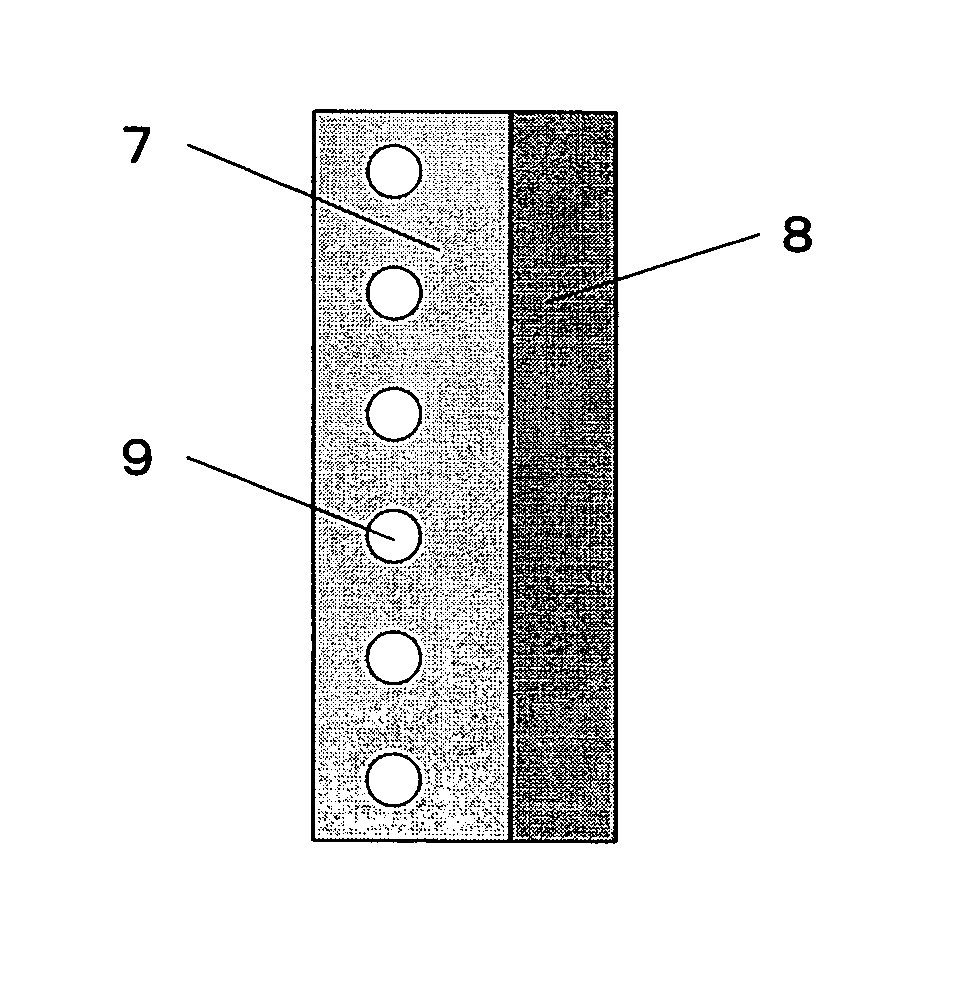Electrode catalyst for oxygen reduction and gas diffusion electrode
a gas diffusion electrode and electrode technology, applied in the field of electrode catalysts, can solve the problems of increased overvoltage, insufficient catalytic activity, and decreased value of 1.23 v, and achieve the effect of enhancing oxygen reduction activity
- Summary
- Abstract
- Description
- Claims
- Application Information
AI Technical Summary
Benefits of technology
Problems solved by technology
Method used
Image
Examples
example 1
Preparation of a Silver-Loaded Carbon
[0104]A carbon containing 50% by weight of silver was prepared as described below.
[0105]Two grams of carbon black (from Mitsubishi Chemical Corporation: Ketjen Black EC-600JD) are ground using a mill (from Janke & Kunkel Co.: A10) and 3.15 g of silver nitrate (from Wako Pure Chemical Industries Ltd.) and then dispersed in 200 ml of an aqueous solution. This dispersion was stirred for 15 minutes using a stirrer, and then subjected to the evaporation of the water content in an oven at 100° C., followed by drying to provide a powder. Subsequently, this powder was subjected to firing in a stream of nitrogen at 250° C. for one hour, to thermally decompose silver nitrate, using an inert gas firing furnace (from Yamada Electric MFG. Co., Ltd.: Model VMF165), and then this powder was ground using the mill to provide a carbon containing 50% by weight of silver.
[0106]The resulting rare-earth oxide has an alkaline-earth metal as solid solution therein.
[0107...
example 2
[0110]Magnesium nitrate (Mg(NO3)2.6H2O (from Wako Pure Chemical Industries Ltd.) was used instead of strontium nitrate in Example 1 so as to provide a silver to cerium to magnesium molar ratio of 1:1:0.05. However, preparation and evaluation were carried out otherwise as described in Example 1. The measurement of the powder X-ray diffraction of the electrode catalyst powder prepared resulted in the detection of Ag and CeO2. A diffraction angle (2θ) corresponding to the main diffraction line of CeO2 (111) was 28.669°. The conversion of this to a grating constant provided 5.393 Å. The grating constant of CeO2 alone is 5.411 Å. The solid solution formation of magnesium produced the decreased grating constant.
[0111]The measurement of a potential-current curve using a channel flow electrode is depicted in FIG. 2; higher oxygen reduction activity was shown.
example 3
[0112]As described in Example 1, a carbon containing 50% by weight of silver was prepared. 0.108 g of the silver-loaded carbon powder were added to 0.217 g of cerium nitrate (Ce(NO3)3.6H2O, from Wako Pure Chemical Industries Ltd.) to provide a silver to cerium molar ratio of 1:1. This mixture was dispersed in water, was subjected to ultrasonic dispersion for 5 minutes, subjected to the evaporation of the water content in an oven at 100° C., and was dried to provide a sample powder. This powder was subjected to firing in a stream of nitrogen at 400° C. for one hour, using an inert gas firing furnace, and ground using the mill to provide an electrode catalyst powder.
[0113]The measurement of the powder X-ray diffraction of the electrode catalyst powder prepared resulted in the detection of Ag and CeO2. A diffraction angle (2θ) corresponding to the main diffraction line of CeO2 (111) was 28.464°. The conversion of this to a grating constant provided 5.411 Å.
[0114]The measurement of a po...
PUM
| Property | Measurement | Unit |
|---|---|---|
| particle diameter | aaaaa | aaaaa |
| particle diameter | aaaaa | aaaaa |
| particle diameter | aaaaa | aaaaa |
Abstract
Description
Claims
Application Information
 Login to View More
Login to View More - R&D
- Intellectual Property
- Life Sciences
- Materials
- Tech Scout
- Unparalleled Data Quality
- Higher Quality Content
- 60% Fewer Hallucinations
Browse by: Latest US Patents, China's latest patents, Technical Efficacy Thesaurus, Application Domain, Technology Topic, Popular Technical Reports.
© 2025 PatSnap. All rights reserved.Legal|Privacy policy|Modern Slavery Act Transparency Statement|Sitemap|About US| Contact US: help@patsnap.com



